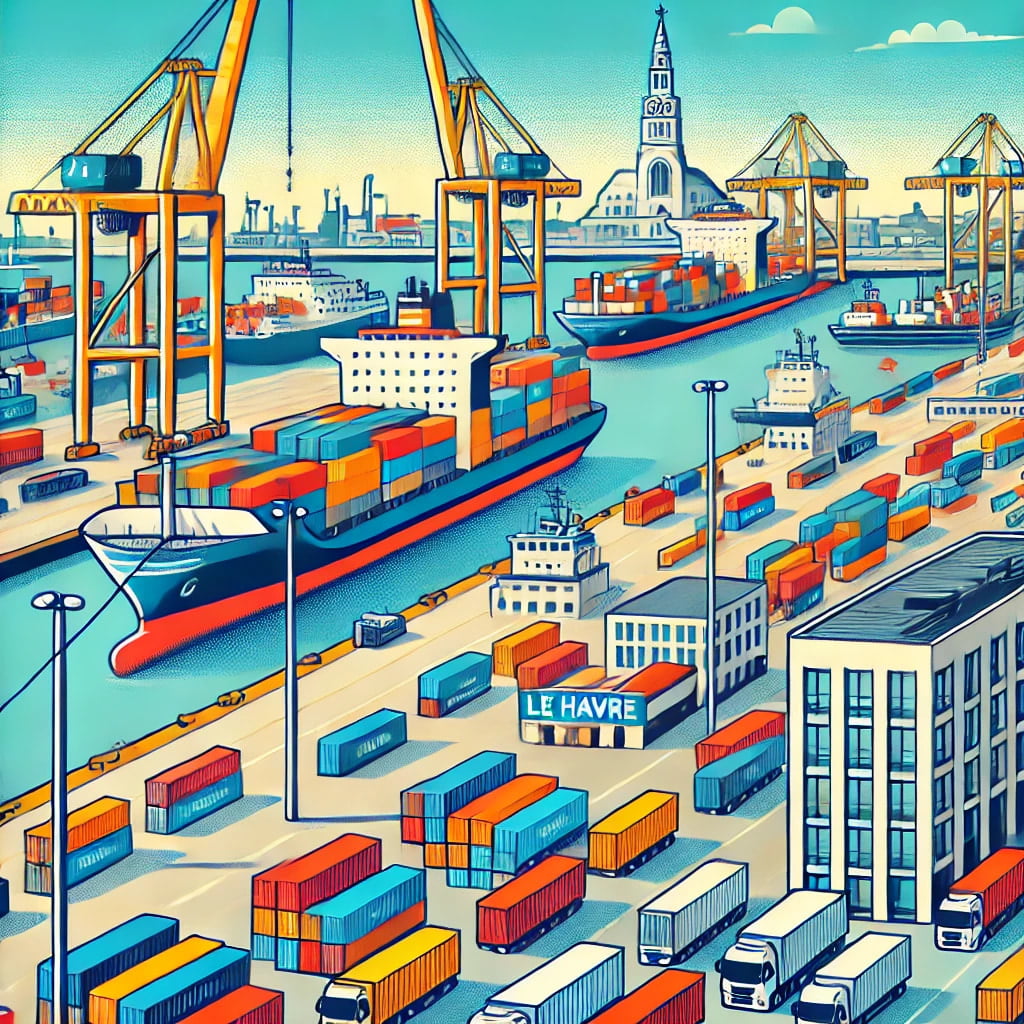
The English Channel, often referred to as the "Narrow Sea," is a stretch of water that separates southern England from northern France. This narrow waterway, only 21 miles wide at its narrowest point, is not just a geographical divide but also a vital conduit for global maritime traffic. For centuries, the English Channel has been one of the most crucial and busiest shipping routes in the world, serving as a gateway between the Atlantic Ocean and the North Sea. But what makes this stretch of water so extraordinarily busy? Let’s dive into the reasons behind its prominence in global trade and shipping.
1. Geographical Significance.
The English Channel’s geographical location makes it a natural maritime corridor for vessels traveling between the Atlantic Ocean and the major ports of Northern Europe. The Channel connects the Atlantic to the North Sea, providing a direct route to some of the busiest ports in the world, including Rotterdam, Antwerp, and Hamburg. This makes it an indispensable route for ships transporting goods between Europe, North America, and beyond.
2. Economic Importance.
Europe is home to some of the world's largest economies, and the English Channel plays a crucial role in facilitating trade within the continent and with other parts of the world. The Channel supports the economies of both the United Kingdom and continental Europe by enabling the efficient movement of goods, raw materials, and energy supplies. Given the volume of trade that occurs between European countries and global markets, the English Channel naturally becomes a focal point for maritime activity.

3. Proximity to Major Ports.
Several of Europe’s most significant ports are located along the shores of the English Channel or within its easy reach. Ports like London, Southampton, Le Havre, and Dover are all strategically positioned to take advantage of the Channel's proximity to global shipping lanes. By extension, the port of Rotterdam, Antwerp, and Hamburg also benefit of the route of the English Channel. This concentration of major ports along the Channel drives a constant flow of vessels of all types, from massive container ships to oil tankers, ferries, and smaller cargo ships.
4. High Volume of Trade and Commerce.
The high volume of trade that passes through the English Channel is staggering. It is estimated that more than 500 ships navigate the Channel each day, carrying everything from consumer goods and food products to oil, gas, and raw materials. The Channel is a vital link in the supply chains that keep Europe’s economies running smoothly. The significance of this route is highlighted by the fact that it handles a significant portion of the world’s maritime trade, contributing to its status as one of the busiest shipping lanes globally.
5. Historical Significance.
Historically, the English Channel has always been a critical maritime route, even before the advent of modern shipping. Its role in naval warfare, exploration, and trade during the age of empires underscores its long-standing importance. The Channel has witnessed numerous historical events, from the Norman Conquest to the D-Day landings during World War II, further cementing its status as a critical maritime passage.
6. Dense Population and Industrial Zones.
The regions surrounding the English Channel are some of the most densely populated and industrialized areas in Europe. Southern England and northern France are economic powerhouses with significant manufacturing, trade, and service industries. This dense population and industrial activity naturally lead to a high demand for goods, raw materials, and energy, all of which rely on the efficient and constant flow of maritime traffic through the Channel.

7. Technological Advancements and Infrastructure.
The English Channel is supported by advanced maritime infrastructure, including state-of-the-art ports, navigation systems, and safety protocols. The presence of the Channel Tunnel, which facilitates rail transport between the UK and France, further enhances the movement of goods and people across the Channel. These technological advancements ensure that the Channel remains a safe, efficient, and reliable shipping route, capable of handling the vast amounts of traffic that pass through it daily.
8. Environmental and Safety Considerations.
Given the heavy traffic, the English Channel is subject to strict environmental and safety regulations to prevent accidents and minimize the impact of shipping on the marine environment. This includes traffic separation schemes, compulsory pilotage areas, and stringent pollution controls, all of which contribute to the safe and sustainable operation of this busy maritime route.
Conclusion.
The English Channel’s status as one of the busiest shipping routes in the world is no accident. Its unique geographical position, economic significance, proximity to major ports, and historical importance all contribute to the relentless flow of maritime traffic that defines this narrow stretch of water. As global trade continues to grow and evolve, the English Channel will undoubtedly remain a critical artery in the world’s shipping network, serving as a vital link between nations and continents for centuries to come.


